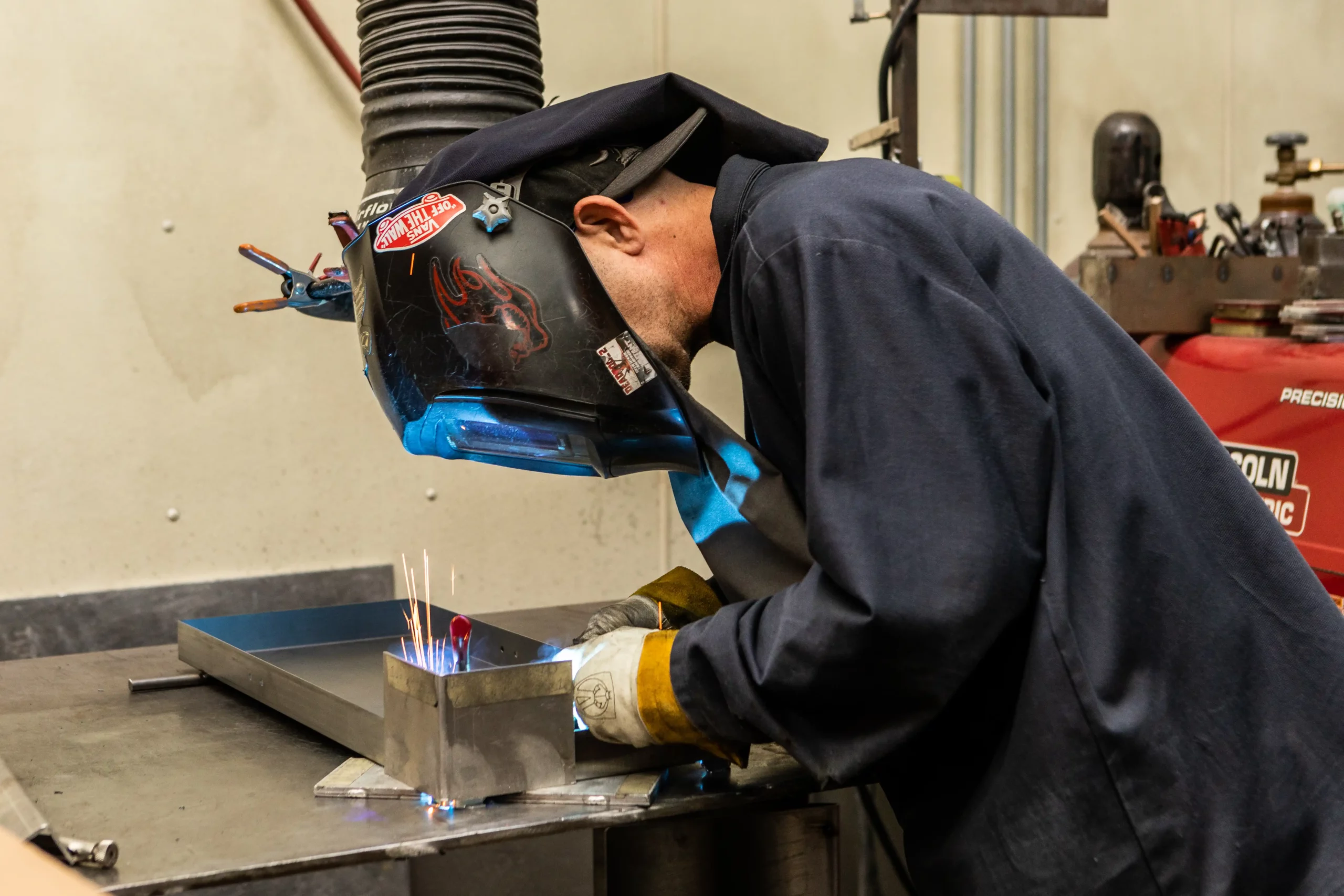Advanced Welding WPS: Tailoring Requirements for Complex Tasks
Advanced Welding WPS: Tailoring Requirements for Complex Tasks
Blog Article
Achieving Welding Excellence: Revealing the Keys of WPS Execution and Optimization
In the world of welding, attaining quality is a search that pivots on the thorough execution and optimization of Welding Treatment Specifications (WPS) By delving right into the essential components, methods, obstacles, and best practices linked with WPS, a globe of welding excellence awaits those that are willing to discover its depths.
Significance of WPS in Welding
The Importance of Welding Procedure Specifications (WPS) in the welding sector can not be overemphasized, offering as the foundation for making sure consistency, quality, and safety and security in welding operations. A WPS supplies comprehensive directions on exactly how welding is to be executed, consisting of crucial variables such as products, welding processes, joint design, filler steels, interpass and preheat temperatures, welding currents, voltages, traveling speeds, and a lot more. By adhering to a distinct WPS, welders can maintain uniformity in their work, causing regular weld high quality throughout various projects.

Crucial Element of WPS
Discussing the integral elements of a welding treatment spec (WPS) is crucial for understanding its role in welding operations. One crucial facet of a WPS is the welding process spec, which lays out the certain welding procedures to be utilized, such as gas tungsten arc welding (GTAW) or protected steel arc welding (SMAW) By including these crucial elements into the WPS, welding treatments can be standardized, making sure quality, efficiency, and safety and security in welding procedures.
Approaches for WPS Optimization

Second of all, training and certification of welding personnel according to the particular demands of the WPS is vital. Giving comprehensive training programs and making certain that welders are licensed to execute procedures described in the WPS can result in better welds and minimized rework.
Furthermore, leveraging innovation such as welding software and surveillance systems can assist in optimizing WPS. These tools can aid in tracking variables, making sure specifications are within specified limitations, and offering real-time responses to welders, enabling them to make prompt adjustments for improved weld high quality.
Usual Difficulties and Solutions
Dealing with challenges in applying the techniques for WPS optimization can prevent welding procedures' efficiency and quality. One common obstacle is poor training or understanding of the welding treatment requirements (WPS) amongst the welding team. This can cause improper implementation of welds, causing flaws and rework. To resolve this, extensive training programs need to be implemented to ensure that all welders are skillful in applying and analyzing WPS properly.
One more challenge is the lack of appropriate documents and record-keeping, which is vital for WPS optimization. Without clear documents of welding specifications, materials used, and evaluation results, it ends up being difficult to identify locations for enhancement and guarantee site web uniformity in welding processes. Executing a durable paperwork system, such as electronic welding administration software, can help improve record-keeping and assist in data analysis for continuous improvement.
In addition, irregular welding equipment calibration and maintenance can position a considerable obstacle to WPS optimization. Normal equipment checks, calibration, and upkeep routines should be stuck to strictly to ensure that welding criteria are precisely managed and kept within the specified tolerances (welding WPS). By addressing these typical difficulties with positive services, welding procedures can improve performance, high quality, and overall welding quality
Best Practices for WPS Application
To make certain effective WPS execution in welding procedures, adherence to market requirements and careful focus to detail are critical. When launching WPS implementation, it is critical to begin by thoroughly recognizing the certain welding needs of the task. This involves a thorough testimonial of the welding treatment specs, materials to be welded, and the environmental problems in which the welding will occur.
When the demands are clear, the next step is to choose the suitable welding procedure that aligns with these specs. This includes seeking advice from the pertinent codes and requirements, such as those given by the American Welding Culture (AWS) or the International Company for Standardization (ISO), to guarantee compliance and high quality.
Furthermore, recording the entire WPS implementation procedure is important for traceability and quality assurance. Comprehensive records should be maintained pertaining to welding criteria, product preparation, interpass and preheat temperatures, welding consumables used, and any type link of discrepancies from the original treatment. Normal audits and evaluations of the WPS can aid recognize locations for renovation and ensure ongoing optimization of the welding process.


Final Thought
To conclude, the execution and optimization of Welding Procedure Requirements (WPS) is crucial for accomplishing welding excellence. By comprehending the crucial elements of WPS, carrying out effective methods for optimization, dealing with common their explanation difficulties, and complying with best techniques, welders can make sure premium welds and safe working problems. It is critical for experts in the welding sector to prioritize the appropriate execution of WPS to boost total welding efficiency and attain desired end results.
The Significance of Welding Procedure Specs (WPS) in the welding industry can not be overemphasized, serving as the backbone for guaranteeing consistency, quality, and security in welding operations. A WPS supplies detailed instructions on how welding is to be brought out, consisting of vital variables such as products, welding procedures, joint design, filler steels, interpass and preheat temperature levels, welding currents, voltages, travel speeds, and extra. One crucial aspect of a WPS is the welding process requirements, which details the specific welding procedures to be utilized, such as gas tungsten arc welding (GTAW) or protected steel arc welding (SMAW) By integrating these vital aspects right into the WPS, welding treatments can be standard, guaranteeing quality, efficiency, and security in welding procedures.
It is important for experts in the welding market to prioritize the proper execution of WPS to enhance general welding efficiency and attain desired end results.
Report this page